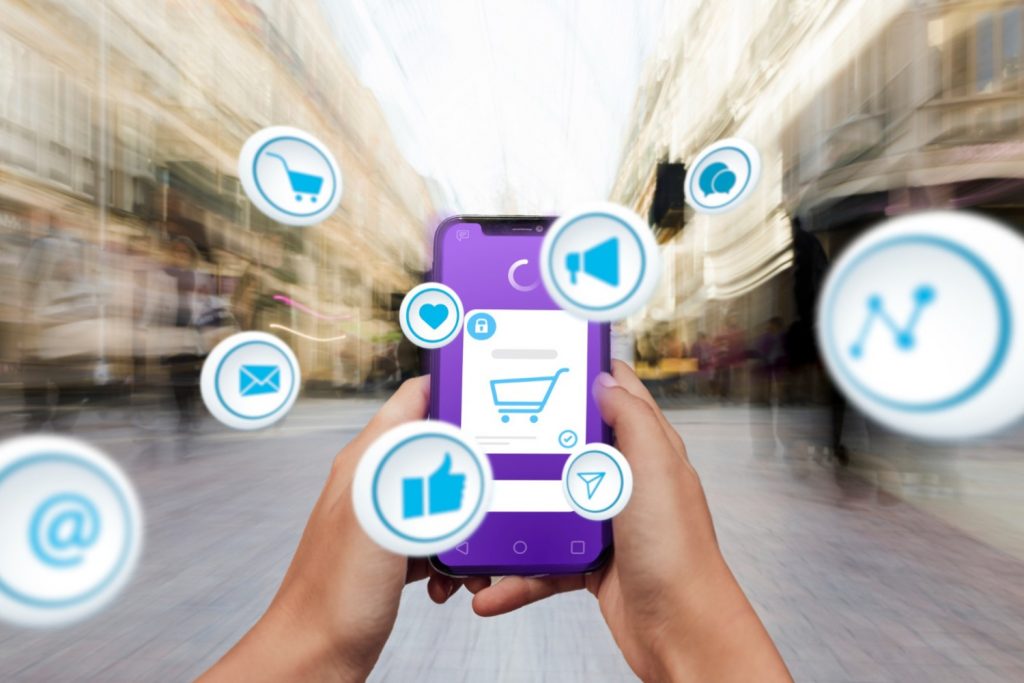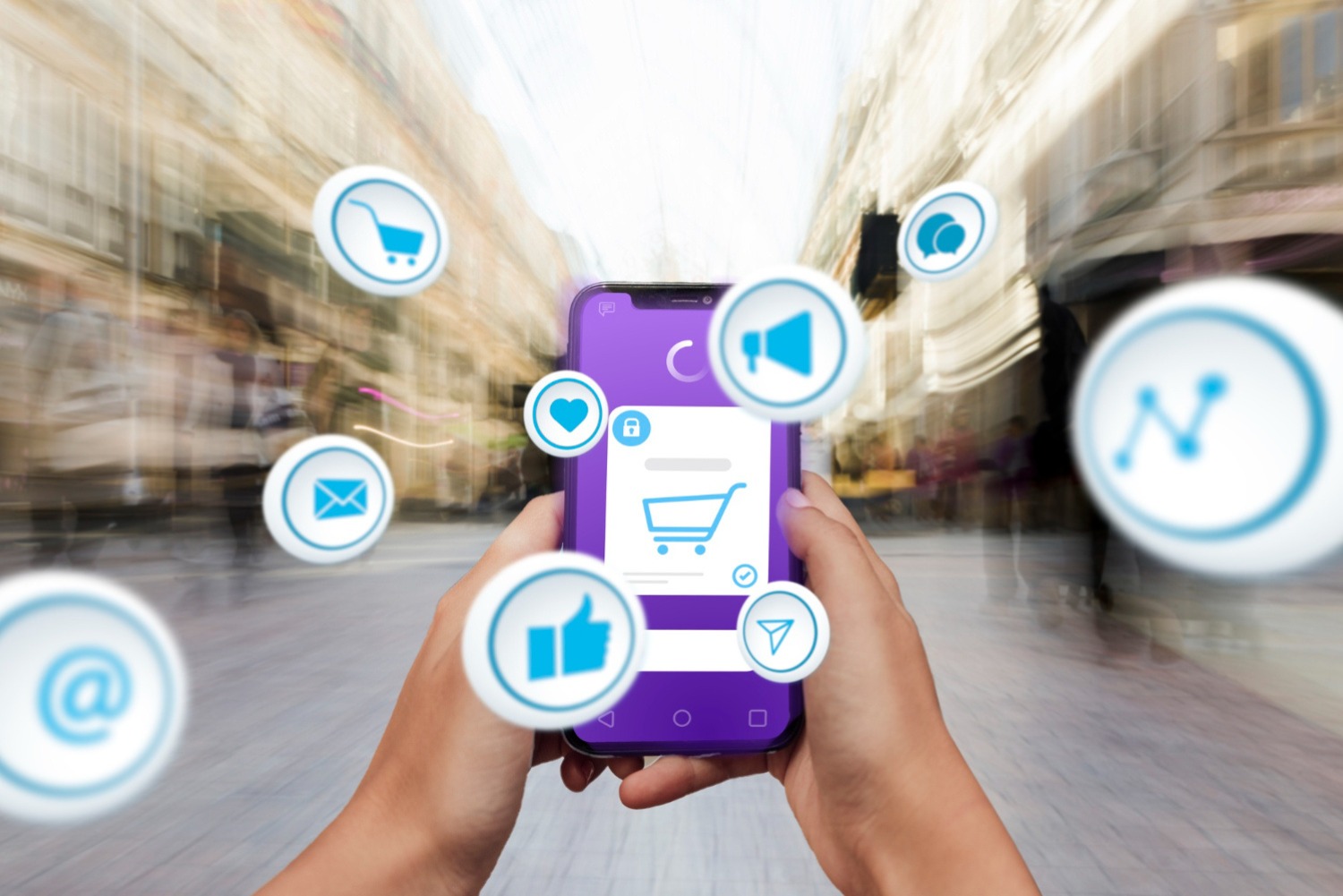In the fast-growing world of mobile commerce, delivering exceptional shopping experiences is key to conversions and revenue. This is where progressive web apps (PWAs) come in for e-commerce. Combining the best of web and apps, PWAs elevate mobile shopping for users while driving outcomes for online retailers.

The Rise of M-Commerce
Mobile has revolutionized shopping behavior. Over 50% of e-commerce traffic now comes from smartphones and tablets. However, the average mobile conversion rate still lags at just 2%, compared to over 3% on desktop. This “m-commerce gap” signals major room for improvement.
A key reason behind lower conversions is subpar mobile user experiences on many e-commerce sites. Responsive sites adapt layouts but lack advanced e-commerce features. Native apps provide richer experiences but face adoption hurdles with required downloads and installs.
This is where the progressive web app model comes in – bridging the mobile commerce gap with fast, feature-rich experiences.
What are Progressive Web Apps (PWAs)?
Progressive web apps combine the user experience of native mobile apps with the broad reach of websites. PWAs load fast, work offline, can be installed, and re-engage users with push notifications.
Developed with web languages like JavaScript, CSS and HTML, they work across platforms like iOS, Android and desktop. All while avoiding app store approval and download requirements.
Examples of popular PWAs include Twitter, Pinterest, Uber and Tinder.
PWA Benefits for E-Commerce
For online retail, PWAs uniquely elevate mobile shopping in ways that boost conversions and revenue:
1. App-Like Experience
PWAs match the interactivity and speed of native apps. Core features like:
- Install home screen icons
- Smooth scrolling
- Gesture navigation
- Immersive design
Drive engagement resembling real apps.
2. Faster Load Times
With cached content and streamlined code, PWAs load incredibly fast – often under 1 second. For price-sensitive users, this can make the difference in bouncing or buying.
3. Seamless Offline Access
Thanks to service workers caching content, PWAs allow browsing catalogs and adding items to carts without connectivity. This rescues many abandoned cart scenarios.
4. Easy Re-engagement
Push notifications prompt users to return and complete purchases later with personalized messaging.
5. Improved SEO Potential
As web apps, PWAs benefit from search engine crawling and indexing unlike native apps. This expands organic discovery and traffic sources long-term.
Real-World PWA Success Stories
Data from major brands highlight the commercial impact of PWAs:
AliExpress
- 2X more time spent per session on PWA over previous mobile site
- 74% higher conversion rate with PWA
- 82% increase in iOS conversion rate
Lancôme
- 4X higher click-through rates from PWA push notifications vs emails
- 3X longer sessions on PWA over previous site
- 8% increase in conversion rate
George Clothing
- 31% higher conversion rates after moving to PWA
- 28% more time spent per session
- 20% more page views per session
Key User Experience Upgrades
Beyond the numbers, let’s explore how core PWA capabilities create standout mobile shopping experiences:
Rapid Page Loads
By caching site assets like images, scripts and stylesheets locally, PWAs minimize external resource calls that slow page loads. Code is streamlined for mobile devices to load UI fastest.
Immersive Design
PWAs utilize latest web capabilities for smooth UIs with animated scrolling, sharp graphics and gesture controls matching native apps. Users instantly understand interactions.
Seamless Offline Browsing
Service workers enable offline access to product catalogs, search and more. Users can add items to carts without constant connectivity. Pending actions sync automatically when back online.
Contextual Push Messaging
With user permission, timely and personalized push alerts re-engage users to complete carts. Strategic triggers related to browsing history boost results.
Low-Friction Re-finding
Add to home screen prompts encourage installs for one-tap access later. Push alerts then draw users back into immersive experiences instantly.
Making PWAs Part of Your Strategy
The mobile commerce potential of PWAs is clear. Leading online retailers utilize them in a multi-channel approach:
- Website: Full desktop site with responsive mobile version
- PWA: Immersive mobile web app experience
- Native app: Premium experience for highly-engaged user segment
This tiered model harnesses PWAs to elevate mainstream mobile shopping at scale. For power mobile users, native apps provide cutting-edge functions unlocking greater lifetime value.
In the race to win e-commerce in an increasingly mobile world, leveraging PWAs and native apps together unlocks full revenue potential across user segments while closing the mobile conversion gap decisively.
Key Takeaways
PWAs are uniquely positioned to drive mobile commerce growth combining the reach of websites with interactivity of apps. With proven power to lift conversion rates and revenue, they deserve a central role in e-commerce mobile strategies moving forward. The numbers and user benefits speak for themselves.
To learn more about the commercial potential of PWAs for e-commerce and mobile users, contact our industry experts today.




I have been browsing online more than 3 hours today, yet
I never found any interesting article like yours. It is
pretty worth enough for me. Personally, if all website owners and bloggers made good content as
you did, the web will be a lot more useful than ever before.